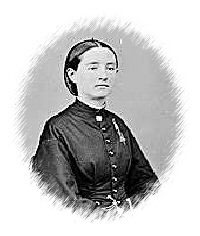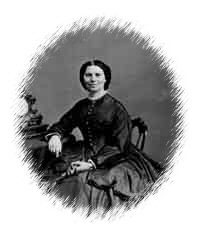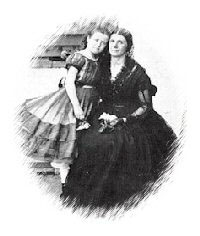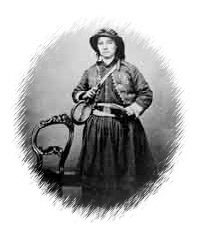| Mary Walker- first female doctor |

|
Women slowly gained recognition as Medical Doctors and Surgeons during the Civil War. They gained acceptance
to Medical universities and studied alongside men, becoming proficient in medicine and surgery. Although female doctors were
a rarity during the Civil War, they had finally broken the gender barrier in medicine.
|
 |
 |
 |
| Clara Barton- nurse, founder of the Red Cross |

|
The most commonplace for women in the field of medicine was as nurses. Women tended to soldiers, refugees,
children, and even horses! They rolled bandages, darned socks, prepared meals for the wounded, assisted in amputations and
removal of bullets and flak, as well as provided bedside care for sick and wounded soldiers in hospitals, medical wards, and
on the battlefield.
| Rose O'Neal Greenhow- Confederate spy |

|
Many women who wanted to serve in the military and were not allowed due to their gender, became spies. Many
gathered information in Washington and Richmond and delivered the coded information to their respective sides (Union or Confederate).
Besides acting as couriers of battleplans, women often carried contraband to the soldiers in the form of ammunition, weapons,
ether, chloroform, medicine, bandages, and quinine. If caught, spies were sent to military prisons to await trial and possible
execution. They risked their lives for their army.
|
 |
 |
 |
| Mary Tempe- vivandiere soldier |

|
Vivandiere litterally means "hospitality giver" in French.
These brave women traveled with soldiers for little or no pay as sutlers,
mascots, wash women, cooks, or nurses, color bearers, while others fought alongside their male counterparts. Many
Vivandières carried a trademark cask, either round or oval, often filled with water, brandy or wine. Their uniforms generally
consisted of jackets copied from those of their units, many times with feminine touches such as extra braid or lace. They
wore men's pants under a knee-length skirt and leather boots. It is interesting to note that many Vivandières had
pants which were sewn in two sections, cotton from the waist to just above the skirt hem, with wool starting at the hemline,
so that they appeared to be wearing the same wool pants as their male companions. The vivandiere paid little heed to her non-combat
job description and was frequently found on the firing line in some of the toughest battles of the war. If she wasn't tending
to the wounds of her comrades, she could well be found loading, aiming and firing rifles at her enemy. And the enemy
could be either Yanks or Rebels because both sides had vivandieres.
|
 |
|
|
|

